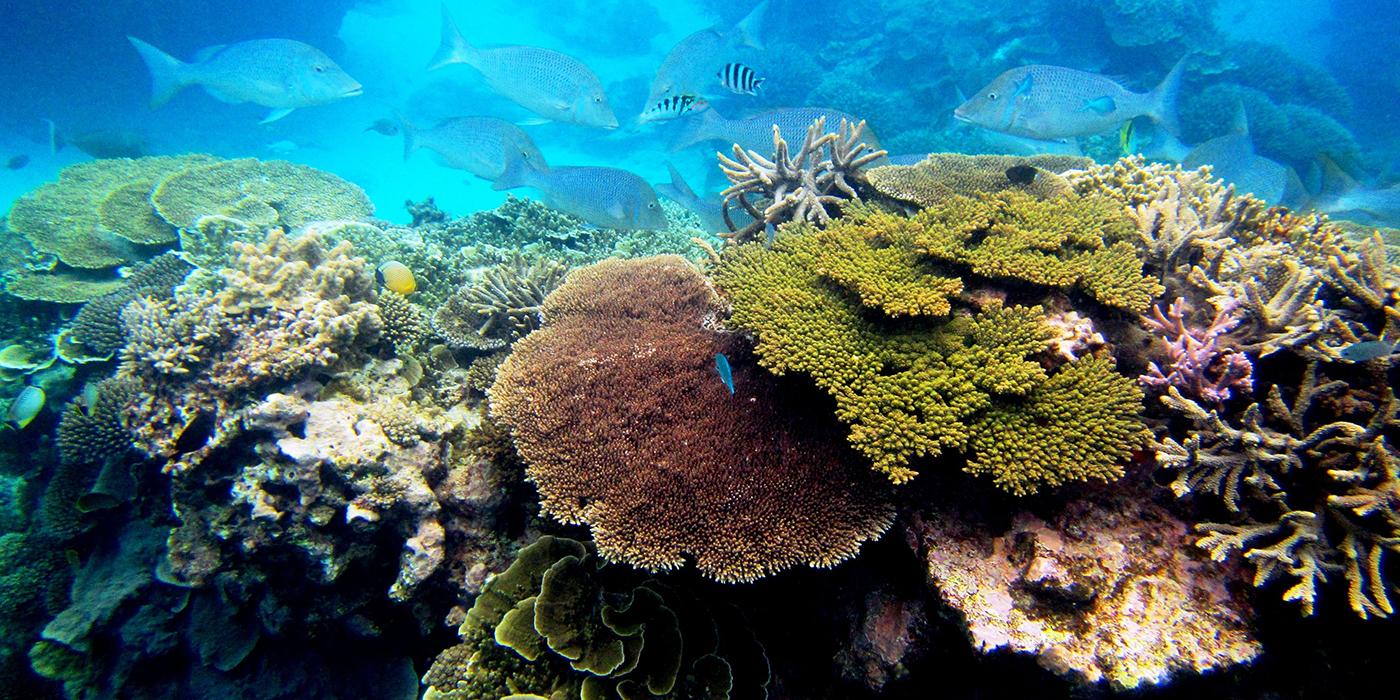Coral in Crisis
Rising ocean temperatures and a strong El Niño season combined last year to induce coral bleaching in reefs around the globe. Bleaching events lower coral growth rates, decrease reproductive capacity, increase susceptibility to disease and, if sustained over time, result in high mortality rates. In 2016, 67 percent of the corals in Australia’s Northern Great Barrier Reef died in the midst of the largest coral bleaching event ever observed. The Great Barrier Reef is now experiencing a significant wide-scale bleaching event for the second year in a row, an emerging pattern that researchers have never before observed.
These coral bleaching events are truly shocking, but Smithsonian Conservation Biology Institute’s Dr. Mary Hagedorn and the Reef Recovery Initiative have not been sitting idly by while the genetic diversity of corals is threatened. The team made significant scientific and programmatic achievements in 2016 to help safeguard coral species from extinction and provide a strategy for restoring damaged reefs.
Preserving the World’s Coral
In November, the team collaborated with the Taronga Conservation Society and the Australian Institute of Marine Science (AIMS) to collect coral sperm during a spawning event on the Great Barrier Reef. Over the course of eight nights, they collected and froze a total of 643 tubes of coral sperm from 60 individual coral colonies representing nine species. Four of these species are new to the team’s coral cryo-bank, increasing the total number of cryopreserved coral species in frozen repositories from 12 to 16. They then shipped these specimens approximately 1,800 kilometers to a frozen repository in Dubbo, Australia, creating the largest collection of frozen coral gametes on the planet. During this collaboration, they also trained colleagues at AIMS in how to cryopreserve symbiodinium (the critical life-giving algae that lives inside coral). The Reef Recovery Initiative intends to continue expanding and accelerating cryopreservation work in the years ahead to preserve coral genetic diversity before it is lost.
Symbiodinium Research
Some exciting new preliminary data involve the potential creation of a practical conservation tool centered on the algae that live inside and feed the coral, called symbiodinium. As coral begins to stress from warming waters, it is the sensitivity of the algae that begins the coral’s downward spiral of oxidative stress and potential death. Each family of symbiodinium has different ranges of sensitivities to ocean temperatures. An important observation is that some coral populations in Middle Eastern waters have never been observed to bleach in recent history, perhaps chiefly due to the amazing heat tolerance of their symbiodinium, which is up to 35 degrees Celsius!
Although Dr. Hagedorn and her team successfully cryopreserved symbiodinium in 2015, the long term effects are not certain. Most coral larvae must absorb their symbiodinium when they begin to settle. If they do not, the larvae will die. In September 2016, frozen and thawed symbiodinium was offered to coral larvae, and the coral took them up within two days. This suggests a very important point, that the cryopreserved symbiodinium are palatable!
The next step is to see if the team can freeze, thaw and culture the symbiodinium. This last piece related to culturing the cell is critical, because if they are to create newer, more heat-tolerant types of symbiodinium through selective breeding or genetic constructs, then freezing, thawing, culturing and observing coral larvae uptake will be a critical sequence of events.

